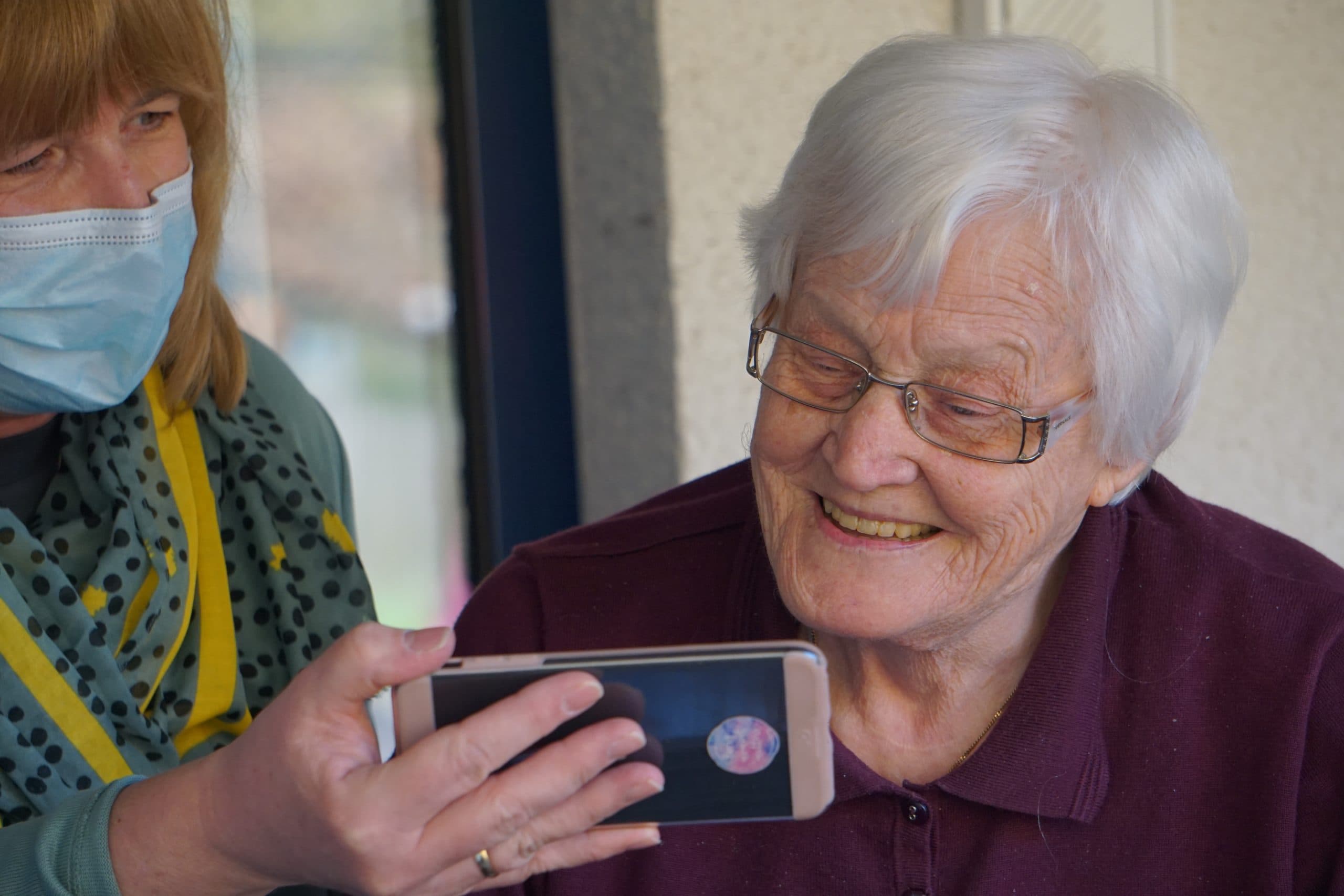Running a 90-day assisted living marketing plan can be a great way to boost a new initiative or reinvigorate marketing efforts that have been coasting. I’ve found that a 90-day cycle is a perfect blend between the considered strategy and urgent execution.
Before we jump into my 90-day planning framework, let’s first get some clarity around the marketing challenge itself.
Assisted living marketing, like most industries, has its product and buyer nuances that require us to go beyond cookie-cutter marketing tactics.
Here’s my shortlist of unique assisted living marketing challenges:
- Assisted living is a complex blend of healthcare and residential living
- Assisted living, in all of its many forms, is expensive and often presents a lifelong change
- Because of the cost, its link to medical acuity, and its life change, assisted living is a choice that has two very different buyer’s journeys. One is characterized by exhaustive research over a long period. The second is an unexpected life event and often urgent, requiring intense but brief decision-making
- Possibly a unique attribute of assisted living marketing is the indirect buyer relationship. Assisted living is often a collaborative decision between a child and their aging parent(s) or one of their senior parent(s) children in counsel with other siblings or family members.
In addition to overcoming these product complexities and the indirect buyer, you must also differentiate yourself and position your community in your local market.
That is why I like to focus my clients and their 90-day assisted living marketing plans on positioning first and marketing tactics second.
This is my formula.
The First 30 Days of Your Marketing Plan
Like any good strategist, the first step is getting a good lay of the land and evaluating your strengths and weaknesses. The faster you make these assessments, the quicker you start making a positive impact on your marketing objectives.
What do you offer that is unique in your market?
Assisted living communities offer a broad spectrum of experiences and care. Your first objective should be to articulate your position along this spectrum clearly.
Families and potential residents consider a complex array of decision points – the quality of life, level of care, and cost. Make sure that you clearly and simply articulate your position on each of these critical areas.
My favorite marketing plan shortcuts to an immediate impact
Over the years, I’ve noticed a few common in-house assisted living marketing approaches. These propensities give me a few guaranteed shortcuts to generating more leads.
The following steps are how I find those opportunities.
1. Evaluate your website(s) for sameness
Most assisted living websites are cliche moments of smiling seniors on soft, light, muted backdrops. Most are using the same limited free stock photos found on Unsplash, Pexels, and the like.
Don’t get me wrong; I love what Unsplash and Pexels have done. But, if you review those stock photo sites, you will quickly discover a minimal inventory of senior images.
Most assisted living WordPress themes are image-heavy and free senior living stock photos are limited. I bet your website looks very much like a lot of your competitors.
Unique Photos Initiative: Hire a photographer and do a photo shoot of your community. Here is a quick shot list: outside, residents enjoying the community, staff enjoying serving the residents, activities, and events.
Check out Kensington Senior Living as an example of good use of internal community photos.
Schedule at least two photoshoots a year to build an excellent seasonal library. This library will become your own internal stock photo library.
2. How easy do you make it for web visitors to engage and ask questions?
Another common problem with senior living community websites is misunderstanding where their visitors are in the decision-making process.
By the time that eldest child has arrived at your community’s website, they have probably already done most of their preliminary research. A Place for Mom, Caring.com, Alzheimer’s Association, and other similar sizeable senior living publishers and organizations have already captured their early questions and Google search queries. Once they land on your website, they probably evaluate local community options, care, and amenities and compare.
Differentiation and Call to Action Initiatives: Use those unique community photos in conjunction with clear and concise copywriting to stand out from your competitors – at a glance. Then make your phone number and a simple web form easy to find, welcoming any questions.
3. Make sure your Google Analytics is set up correctly to track goals
We’re in growth mode. Therefore it is essential to track new trends in visits, sources of traffic, and conversion rates.
Google Tag Manager Initiative: Make sure to configure your Google Tag Manager and Google Analytics to track goals.
4. Review your overall digital footprint
Backing up just a little bit, let’s make sure that you’re easy to come across online. As we mentioned earlier, your target clientele is going to be doing a lot of online research. We want you to show up everywhere seemingly. Ironically, this is simpler than most think.
Operation Brand Saturation Initiative: Here are the key tactics you need to employ to surround your ideal audience with your brand quickly.
Google My Business – This is a bit of an art to ensure that your senior living community shows up in the Google Search and Map Pack. Google My Business is one of the best ways to funnel in many local senior living community researchers quickly.
Google Ads Remarketing – Make sure that your Google Ads account is appropriately set up and capturing an audience list (folks that have already visited your website) to use in your remarketing campaigns.
Facebook Ads Brand Campaign – Develop simple Facebook Ads that focus on etching your brand into the minds of your target audience. These can be simple images of your community and residents in action. Use Facebook’s incredible targeting options to show them only to your ideal demographic in a local radius around your community’s location.
Facebook Ads Retargeting – Like Google Ads, make sure that you’re acquiring an audience and showing ads to people who have already visited your website. Keep yourself top of mind as they continue to research and seek answers to their senior living questions.
Passive PR Publishing Strategy – This is our unique spin on PR. Journalists are increasingly sourcing stories and content from social media, not the traditional PR news wire. Take advantage of this by writing PR-targeted blog posts in a News & Media-specific category. Then aggressively post these articles into your social media channels.
These five relatively simple strategies will immediately make your ideal customer feel like you’re the premier senior living community in your local area.
5. Get started with your content plan
Now that you have started building your foundation digital marketing footprint, it’s time to start growing your reach. Content marketing, informed by SEO, is the best way to begin this process.
In the first 30 days, you’re not likely to get much impact from content marketing. It takes time to plan a strategy and then write or record the content, but like any good investment plan, the sooner you start, the better.
Start your content strategy with a simple list of keywords that you think your prospective residents are searching for — assisted living, memory care, Alzheimer’s care. Put these obvious seed keywords into a free SEO tool, like Ubersuggest or just search them in Google, and begin exploring to generate some initial content ideas.
For more advanced strategies, we use a combination of professional SEO and content marketing tools, like SEMrush, Ahrefs, and Buzzsumo.
Once you have your SEO research in hand, spend a little time interviewing your sales team. Ask them to share some of the questions, topics, and objections they commonly run into on sales calls.
From this research, generate a refined list of topics to begin creating content around. Establish an editorial calendar, start writing blog posts, take community pictures, host webinars or podcasts, and create videos.
Okay, that’s a pretty packed plan for your first thirty days. Now, let’s take a deep breath and then jump into month two.
60 Days into Your Marketing Plan
For the next 30 days, your goal is to establish workflows and measure your KPIs (Key Performance Indicators).
Here is the most basic rhythm for a simple lead generation program.
1. Review and analyze your Google Analytics. Focus only on three metrics – visitors (traffic), sources of traffic, and goals (conversions). Remember, we are looking for growth and traction trends. Refining and optimizing should come later once we have some substantial numbers.
2. Start regularly publishing content. Use this content with your social media to begin sending positive signals to Google and ranking in common search queries.
3. Measure and start optimizing your Google and Facebook Ads. You should begin with branded and remarketing campaigns, but you will see the effectiveness of paid advertising reasonably quickly. If you focus on it, you’ll discover a little bit of optimization will make more leads a simple function of increasing your budget.
One of the secrets of developing and scaling an effective digital marketing program is to resist the temptation of endlessly brainstorming new creative ideas. Instead, focus on making your workflows more disciplined, repeatable, and consistent. Optimize against positive trends and kill negative ones.
Massive ROAS (Return on Advertising Spend) comes with refining your strategy, not constantly throwing spaghetti against the wall.
90 Days and into the Next Quarterly Plan
In the final 30 days of your 90-day marketing plan, continue to run our 90-day marketing game plan consistently. Then add in a little extra time to analyze and strategize for the next cycle.
This is my framework for analyzing, presenting, and closing out our 90-day marketing plan.
What were our original business goals?
In our first iteration of a 90-day marketing plan, these are often simple objectives. Goals like increasing traffic, gaining new keywords, and moving existing ones up to within striking distance (average position of 20-30 for keyword targets) of page one. Then, of course, we should have generated a few online leads and got some sales feedback on the quality of those inquiries.
What tactics created the most significant impact?
What activities created the most significant traffic growth, the upward movement in keyword positions, and generated leads? What do we do to scale those activities in our next quarter?
What tactics or activities didn’t positively contribute to our KPIs?
These seemingly unproductive activities are the ones you have to be the most careful in simply discarding. While I’m a big fan of staying focused and cutting off time and resources to things that don’t work, many digital strategies take time to grow the audience and become effective. So, prune with caution and skepticism in your first 90-day marketing plan.
Summarize the outcomes of your 90-day marketing plan
Your executive summary should be a concise paragraph highlighting positive (and negative) results and introduce the vision for the next quarter – what worked, what you intend to scale, and what you’ll potentially cut.
Notice that we’re not concocting new grand plans. Instead, we’re optimizing, refining, and iterating our last quarterly plan.
Honestly, there are only so many digital playbooks you can run.
Exceptional results in digital marketing come from experts who have done it repeatedly and can efficiently set up campaigns and connect all the dots.
Our Next 90-day Marketing Cycle
The 90-day Marketing Plan seems to be the perfect balance between strategic planning (time to think) and expectations for timely results.
In the case of assisted living communities, the quarterly cycle also fits nicely alongside a traditional business cycle. By aligning your marketing activities with your organization’s revenue and leadership reporting, the closer you can connect your marketing plan to business goals.

